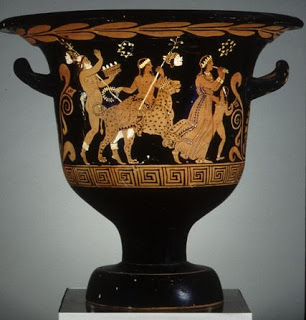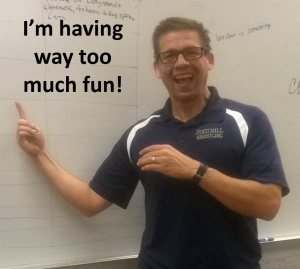After studying and teaching English Romantic Poetry and finding myself aglow with delight, I built a time machine and traveled back 30 years to talk to my teenage self. Here’s what transpired:
Me: Hey, Trent!
Teenage Me: Who are you, old man? And why are you talking to me?
Me: I’m you from the future and I love English Romantic poems. In fact I just taught a unit on English Romantic poetry to students your age, 30 years from now.
Teenage Me: Now, I know you’re full of sh!+! I would never read that. (Teenage Me tries to punch me in the face. I block the punch, sock Teenage Me in the stomach.)
Me: I think it’s time you open your mind to the world’s greatest poets, punk!
So basically, I kicked my own a$$.
Let’s start with something you can use in your classroom right now!: Analyzing Theme in Daffodils by William Wordsworth Lesson Planhttps://forms.aweber.com/form/19/458268919.htm
A list of English Romantic poems with an occasional lesson idea.
- "Ode: Intimations on Immortality" by William Wordsworth. Wordsworth explores the immortality of the human soul in an oft-quoted poem. In fact, you may have heard parts of this poem without realizing where it came from. This poem is suitable for advanced classes.
- "I Wandered Lonely as a Cloud" by William Wordsworth. This is the poem I use to start my poetry unit at all levels. It's great for introducing young scholars to poetry, teaching figures of speech, and covering the basics of British Romanticism.
- "The World is Too Much With Us" by William Wordsworth. This poem is great for teaching the tenets of British Romanticism as well. It's better taught to upper level or advanced classes.
- "The Lamb" by William Blake. Great poem for emerging poetry scholars. The sing-song nursery rhyme feel to it belies it's underlying depth.
- "The Tyger" by William Blake. If you teach "The Lamb," you probably want to teach its companion poem, "The Tyger."
- "The Chimney Sweeper" from Songs of Innocence by William Blake. Most students will scream bull crap on this one. Those who are innocent will smile.
- "The Chimney Sweeper" from Songs of Experience by William Blake. Compare this version to the previous version for a nice class discussion.
- "Kubla Kahn" by Samuel Taylor Coleridge. Most of Coleridge's masterpieces are a little long--"Rime of the Ancient Mariner," for example. "Kubla Kahn" is short and deep and captures the supernatural essence of Coleridge's poetry. I'd recommend it for advanced students.
- "She Walks in Beauty" by Lord Byron. A nice little Valentine's Day poem, great for teaching figurative language and the idealized beauty espoused by the Romantics.
- "So We'll Go No More a Roving" by Lord Byron.
Teenage Me can shake his head all he freaking wants. This is the greatest poem ever written: That is all he knows on Earth and all he needs to know.
- "Love's Philosophy" by Percy Shelley. After reading this poem, I'm guessing Shelley was pretty good at wooing the ladies. He did marry the author of Frankenstein, after all. I once assigned pre-write asking students to share their philosophy on love. Most of them were almost school appropriate.
- "Ozymandias" by Percy Shelley. I'll admit I've always been a bigger fan of Keats and a bigger fan of Frankenstein, but the more I teach and study Shelley, the more intrigued I become. (Tweet from Teenage Me: SMH)
- "To Solitude" by John Keats. Odes are great for teaching apostrophe and personification.
- "Bright Star" by John Keats. I remember watching the movie "Bright Star" with my wife many years ago. It was depressing (the movie, not my marriage).
- "Ode on a Grecian Urn" by John Keats. I refuse to teach this poem. In fact, I'll not teach much of Keats to non-serious scholars. It's like casting pearls before swine. (Tweet from Teenage Me: SMH)
- Ode to a Nightingale" by John Keats. Most of Keats' odes are depressing and moving.
- "Ode on Melancholy" by John Keats. This one's just plain melancholic.
- "On First Looking into Chapman's Homer" by John Keats. Only Keats can write a poem about reading a book that thrills the fibers of my soul. (Tweet from Teenage Me: SMH)
- "La Belle Dame Sans Merci" by John Keats. This is a Keats poem I'll teach to all levels. It's a narrative. You may want to be on misogynist alert because there's bound to be some bitter kid who just got dumped by his girlfriend who'll start going off in the middle of class about how women are the devil.
Hey, let me know how teaching the English Romantic poets went in your class by leaving a comment.
Follow me on Twitter: @Teacher Trent
Follow me on Facebook: ELA Common Core Lesson Plans
Follow me on Pinterest: ELA Common Core Lesson Plans
Share This:


Speak Your Mind